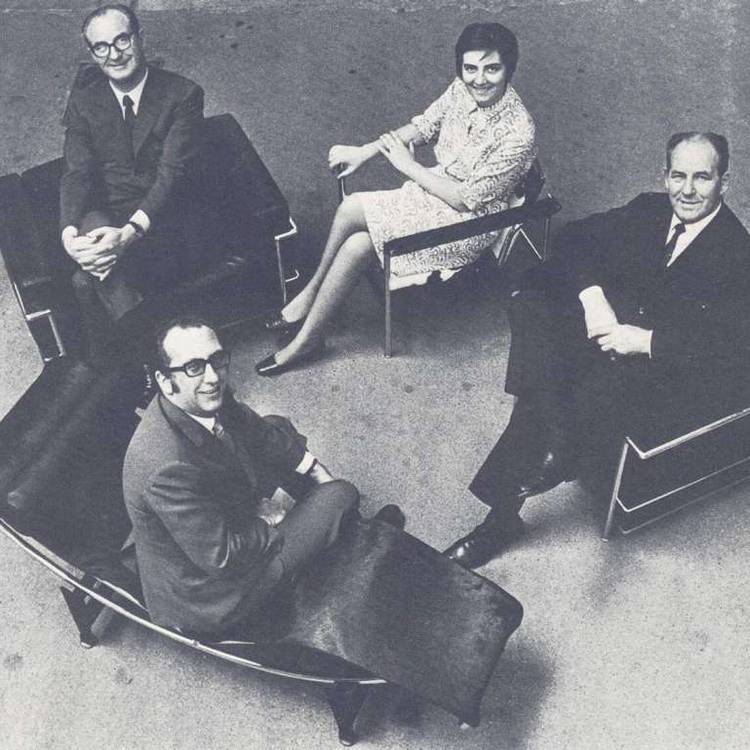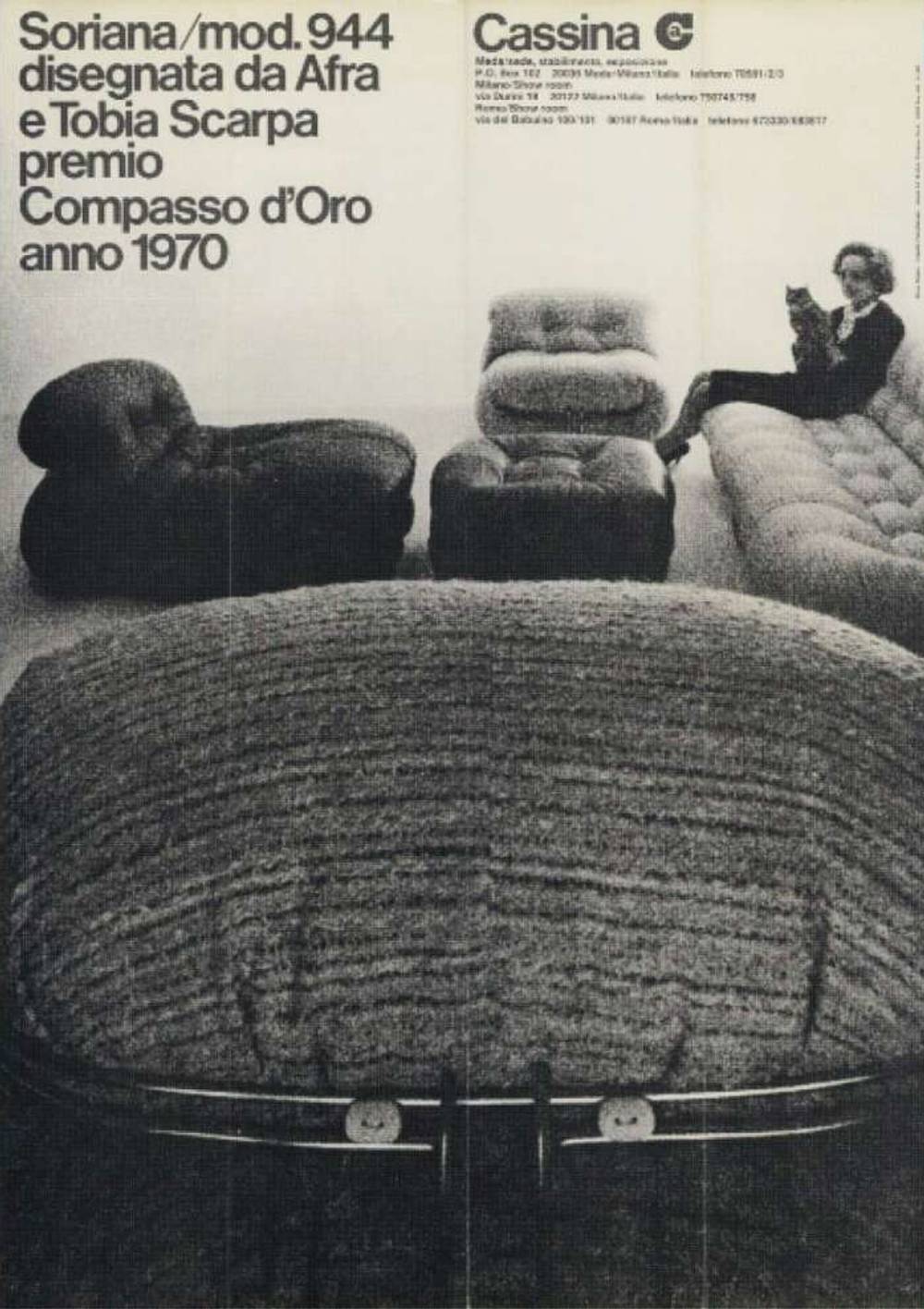Cassina • OLIMPINO
Table
Black lacquered metal structure with top float glass. Amercian walnut feet, with plastic support. Designed by Ico Parisi, in 1955. Cassina Edition.
The entire Cassina collection can be ordered in our physical stores.
REF. 83295
W.270 x H.74 x D.105cm
Ready to deliver in 2 a 3 months
Designed in 1955, the design of this table – a piece of furniture considered by Ico Parisi to be a central element in the home – accompanies the Maestro’s career and evolves with different materials and numerous variations for different private clients.
The Olimpino table has a slender, bold and recognisable square section tubular metal frame made of two pairs of "Y" shaped uprights, whose upper inner arms converge to join under the top, while the outer arms diverge to block the rectangular plate of the top, in monolithic tempered glass, with a brass side stopper. The legs, thus paired, are strengthened with a double crossbar, also in metal, which opens near the sides and forms a double "V" shape. The solid wood arrow feet embellish the design, as do the large brass screws.

Domenico Parisi (1916-1996), nicknamed Ico, was born in Palermo to Sicilian parents residing in Piedmont. In 1925, the Parisi family moved to Como, where Ico earned his building inspector diploma in 1936 and completed an apprenticeship at Studio Terragni. The studio provided him opportunities to connect with influential figures in Como's architecture and art scene. After his discharge from the front in 1943, he resumed his design work in Como, focusing on furnishings, exhibition stands, and interior architecture.
Parisi's productivity increased from the 1950s in both architecture and design. He crafted unique furniture pieces with Brianza craftsmen and later designed for industrial production with companies like Cassina. In the late 1960s, his design research took a new direction with Contenitoriumani, created with sculptor Francesco Somaini and presented at the Milan Furniture Fair in 1968, defining a utopian-existential idea of living. The peak of his design and existential exploration occurred between 1974 and 1976 with "Operazione Arcevia," an interdisciplinary effort to design an entire community. Presented at the 76th Biennale of Venice and exhibited at the National Gallery of Modern Art in Rome (1979), this utopian socio-urban experiment led to his subsequent graphic research theme in numerous exhibitions.


Established in 1927 by Cesare and Umberto Cassina in Meda, near Milan, Cassina launched industrial design in Italy in the 1950s, based on a totally innovative approach that marked the transition from artisan production to mass production. Throughout its history, Cassina has been a melting pot of design luminaries. In the 1950s, it forged an iconic partnership with architects like Le Corbusier, Pierre Jeanneret, and Charlotte Perriand, creating legendary pieces such as the LC1 Sling Chair and LC2 Grand Confort sofa. These collaborations revolutionized furniture design, emphasizing form and function in equal measure.

One of Cassina's remarkable aspects is its ability to transcend eras. The brand's reissues of iconic designs retain their original essence while adapting to modern sensibilities, appealing to new generations of design enthusiasts. This blend of heritage and contemporary relevance is exemplified in pieces like the LC4 Chaise Longue, a timeless icon of comfort and style. Cassina's collaborations extend beyond mid-century architects. It has partnered with contemporary designers like Philippe Starck, Patricia Urquiola, and Jaime Hayon, infusing fresh perspectives into its collections. These collaborations merge diverse design philosophies, resulting in eclectic yet harmonious pieces that resonate with a broad audience.
In the present design landscape, Cassina stands as a bastion of innovation and heritage, continuously pushing boundaries while honoring its rich legacy. Its commitment to craftsmanship, combined with a forward-thinking approach, ensures its relevance and enduring influence in the ever-evolving world of design.






